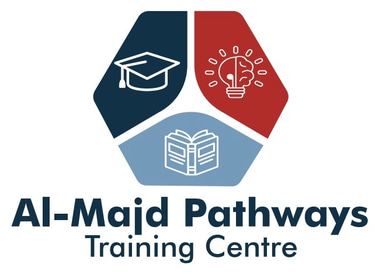
Safety Management In Health
£7800.00
Why Choose this Training Course?
"That was a near miss. Okay, now we continue with our work." This is not the way Health and Safety should be handled. While a near miss is better than an accident, it only means luck intervened. Health and Safety requires a robust system of management, competent leaders, methods for hazard identification, and risk reduction through inherently safer work designs.
All organisations invest considerable amounts in training and guiding their Team Leaders, Managers, Engineers, and Supervisors on new methods of leaner and higher-efficiency production methods. Incidents, however, keep occurring, resulting in human harm and financial loss.
This training course aims to rectify the loss cycle by attaining superior competencies in the areas of Health and Safety. This 10-day Master Class training course provides valuable insights into Health and Safety and is a significant step toward developing competencies that will enable further progress in these fields. The increased competencies of the delegates will result in cost savings and increased efficiencies within the company. The training course covers Safety Management, Hazard Control, and Process Safety Management.
Key Features of Training Course:
Management Systems and the role of risk management
Occupational Health and the importance of safety management
Process safety and legislation applicable to the industry
Systems to prevent the loss of containment
Hazards and controls available for the oil and gas industry
Emergency Preparedness
What are the Goals?
This training course on Health and Safety aims to help delegates achieve the following objectives:
Understand Safety Management
Explain the Risk Assessment process
Analyse workplace hazards
Identify methods of Hazard Control
Explain the foundations of process safety
Describe the systems to prevent the loss of containment
Analyse common risks and controls in the process safety industry
Understand Furnace operations
Appreciate Start-Up and Shutdown Hazards
Summarise safe entry procedures in confined spaces
Create Emergency response strategies
Who is this Training Course for?
This training course is ideal for those working in the Process Industry such as Oil & Gas, Chemicals, and Petrochemicals. It is aimed at professionals who have responsibilities for health and safety and require superior competence in this field, including but not limited to:
Process Managers
Process Engineers
Team Leaders/Supervisors
Maintenance Engineers
Health and Safety personnel
How will this Training Course be Presented?
This training course on Health and Safety is presented face-to-face and will utilise various proven adult learning techniques to ensure maximum understanding, comprehension, and retention of the information presented. The course includes presentations of videos, case studies, and discussions that will enhance the learning process. Active participation is encouraged during the entire training course.
The Course Content
Module 1: Safety Measures and Hazard Control Day One – Safety Management Foundations
The nature of workplace health and safety
Responsibilities of Employers and Employees
Safety Management Systems (Plan, Do, Check, Act)
OHSAS 18001, ISO 45001, OSHA Guidelines for Safety Management
Improving health and safety performance
A Safety Policy
Inspections & Audits
Day Two – Risk Assessment and Control
Setting Targets - Key Performance indicators
Health and safety risk assessment
General principles for control
Hierarchy of risk reduction
Safe systems of work
Human Error
Case Study
Day Three: Hazards and Controls
Physical Hazards (Noise, Vibration)
Electricity Hazards
Work Equipment Hazards
Manual Handling Hazards
Workplace hazards (Temperature, Violence and Bullying, Slips and Trips, Work at Height)
Transport Hazards
Day Four: Incident Investigation, Fire and Emergency Procedures
Incident Investigation
Why investigate Incidents
When to investigate Incidents
Fire safety
Need for Emergency plans
First Aid Provisions
Day Five: Occupational Health & Safety Culture
Chemical Hazards
Occupational exposure limits
Stress
Safety Culture
Review of the Week
Evaluation
Module 2: Perfecting Process Safety Day Six: The Foundations of Process Safety
Introduction
Learning from Accidents
Good Practice Standards for the process industry (EU and USA)
Permit-to-work system
Case Study
Shift handover the key principles
Day Seven: Risk Management and Management of Change
Risk Management
The Swiss Cheese Model
HAZOP Studies
Inherent Safer Design
Case Study
Management of Change
Case Study
Day Eight: Combustion and Confined Space Entry
Furnace operations
Firing conditions
Confined Space Entry
Cleaning, Isolating, and Atmospheric Testing
Training
Case Study
Day Nine: Start Up, Shutdown, Hydrocarbon Storage & Types of Fire & Explosions
Start-Up & Shutdown
Storage Depots – Bund Areas
Safety Instrumented Systems
Case Study
Types of Fire & Explosions – VCE, UVCE, BLEVE, Boil Over
Case Study
Day Ten: Fire and Emergency Response
Passive and Active Fire Protection
Case Study
Emergency Response
Review of the Week
Evaluation
Certificate of Completion: Upon successful completion of the course, participants will receive a Certificate of Completion from Al-Majd Pathways Centre (APC).
Get in touch with us today.
Follow
Sign-up for our newsletter
0044 7466410010
©2025 All rights reserved.
